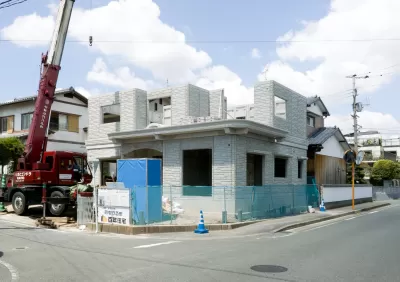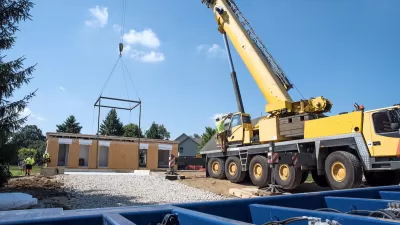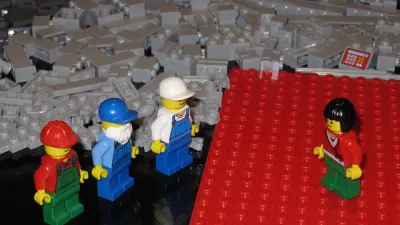When it comes to prefabricated housing, Japan is far ahead of the rest of the world. Will techniques from Japan's efficient modular home manufacturers inform a growing prefab industry in the United States?

Nate Berg takes a deep dive on Japan's unique prefab housing industry. "This approach to construction is becoming almost mainstream in many parts of the world—from Sweden to Germany to Australia. But the world leader in prefabricated housing is undoubtedly Japan. More than 15 percent of the nearly 1 million new homes and apartments built there last year were made inside factories [...]"
In the United States, on the other hand, only about 2 percent of single family homes constructed each year are modular. But that may change. "With advanced robotics, automation, and digital building information technologies—and increasing concern nationwide about the affordability of urban housing—factory-built housing once again seems poised for wider adoption."
Berg discusses the postwar origins of Japan's modular homes, how they've evolved, and how Japanese firms mass-produce housing components on the factory floor. "Typical prefab homes in Japan cost usually in the $300,000s, comparable to conventionally built houses."
While there are some notable prefab projects in the works here in the U.S., like Brooklyn's 461 Dean, "prefab or partially pre-built homes may make their strongest inroads into the current U.S. housing market as a solution to non-conventional housing needs," including housing the homeless or rebuilding after natural disaster.
FULL STORY: Preparing for our prefab future

Alabama: Trump Terminates Settlements for Black Communities Harmed By Raw Sewage
Trump deemed the landmark civil rights agreement “illegal DEI and environmental justice policy.”

Study: Maui’s Plan to Convert Vacation Rentals to Long-Term Housing Could Cause Nearly $1 Billion Economic Loss
The plan would reduce visitor accommodation by 25% resulting in 1,900 jobs lost.

Planetizen Federal Action Tracker
A weekly monitor of how Trump’s orders and actions are impacting planners and planning in America.

Waymo Gets Permission to Map SF’s Market Street
If allowed to operate on the traffic-restricted street, Waymo’s autonomous taxis would have a leg up over ride-hailing competitors — and counter the city’s efforts to grow bike and pedestrian on the thoroughfare.

Parklet Symposium Highlights the Success of Shared Spaces
Parklets got a boost during the Covid-19 pandemic, when the concept was translated to outdoor dining programs that offered restaurants a lifeline during the shutdown.

Federal Homelessness Agency Places Entire Staff on Leave
The U.S. Interagency Council on Homelessness is the only federal agency dedicated to preventing and ending homelessness.
Urban Design for Planners 1: Software Tools
This six-course series explores essential urban design concepts using open source software and equips planners with the tools they need to participate fully in the urban design process.
Planning for Universal Design
Learn the tools for implementing Universal Design in planning regulations.
Caltrans
Smith Gee Studio
Institute for Housing and Urban Development Studies (IHS)
City of Grandview
Harvard GSD Executive Education
Toledo-Lucas County Plan Commissions
Salt Lake City
NYU Wagner Graduate School of Public Service





























